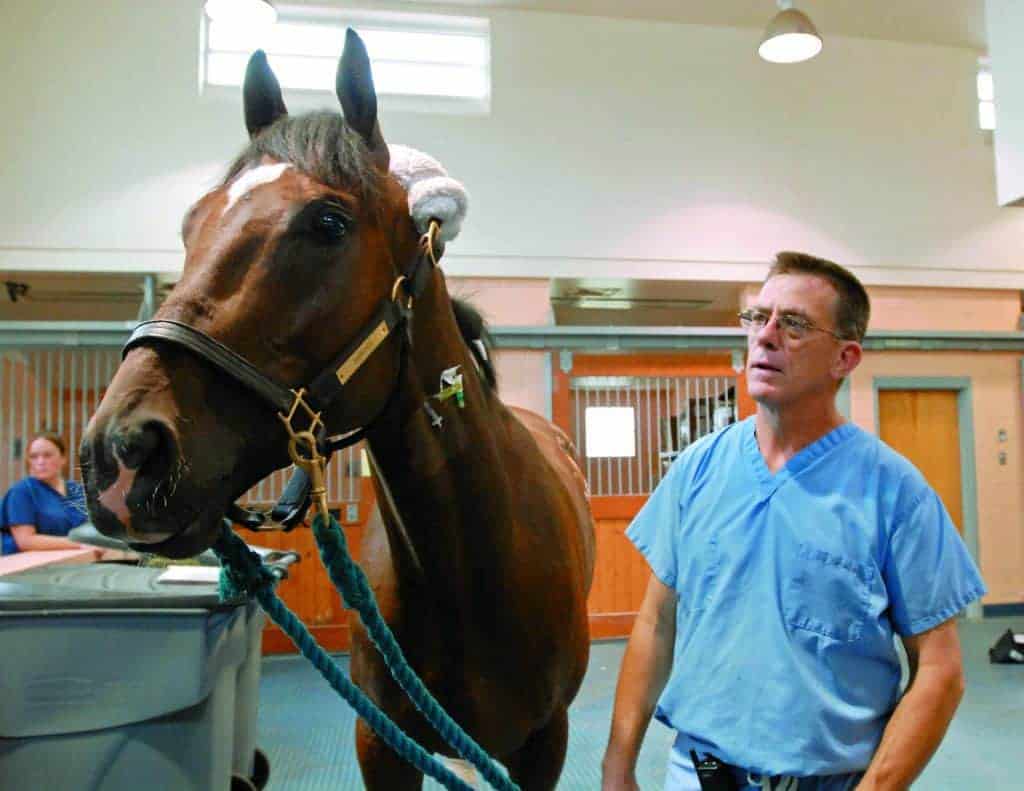
Researchers Study Compensatory Lameness
Consider this under-recognized issue before deciding which limb is the primary lameness source.

Consider this under-recognized issue before deciding which limb is the primary lameness source.

Researchers examined the loading rates on a hoof of a galloping horse wearing different aluminum racing shoes.

Using proper diagnostic technique and good quality radiographs is critical when diagnosing these fractures in foals.

Dr. Dean Richardson will present examples of current state-of-the-art equine fracture treatments.

Learn how one veterinarian chooses cases and uses mesenchymal stem cells (MSCs) to treat horses with joint injuries.

Review the options vets have for looking inside horses’ bodies to see what’s causing a limp, swelling, or pain.

Learn about the challenges associated with interpreting perineural nerve blocks used to help diagnose lameness.

SI disease in performance horses has many clinical signs and causes, making diagnosis challenging for veterinarians. Here’s a checklist to help.

A rupture to this hind leg muscle can be fatal. Here’s what to watch for in young foals.

Researchers determined that the overall incidence of infection was 9.2 per 10,000 injections.

Researchers are studying and using everything from MSCs to PRP and ACS to BMPs. Here are the basics you should know.
The incidence of fatal injury for 2014 was 1.89 per 1,000 starts, compared to 1.90 per 1,000 starts in 2013.

Researchers found poor agreement among less experienced vets and moderate agreement between more experienced ones.
Study topics include laminitis, foal pneumonia, stem cells, endometritis, joint issues, insulin resistance, and more.

Horses with concurrent deep digital flexor tendon lesions were four times more likely to become lame again post-surgery.

Bone is a vital tissue that’s densely packed with specialized cells and supplied with a rich network of blood vessels.
Stay on top of the most recent Horse Health news with
"*" indicates required fields